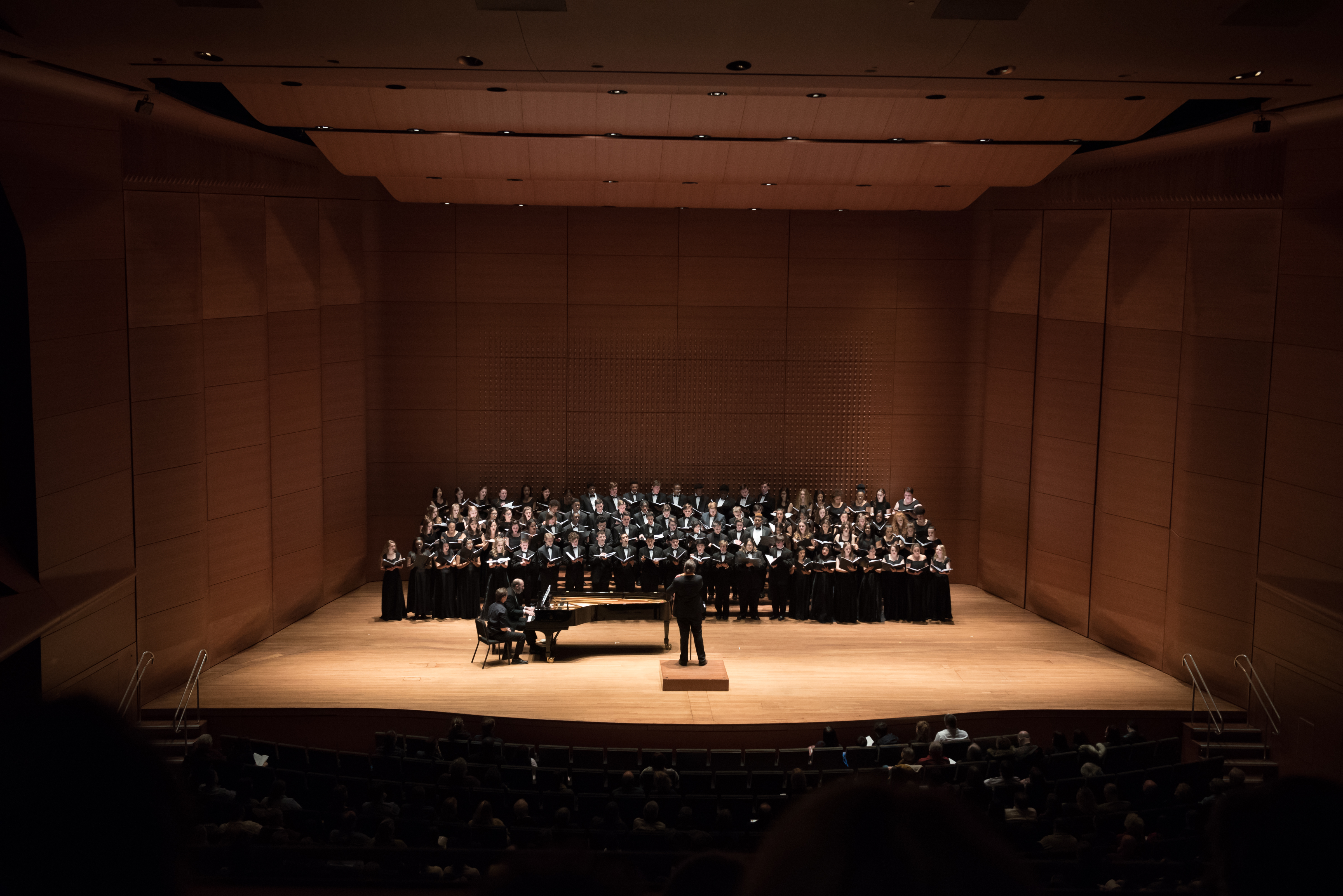Distinguished Concerts International New York (DCINY) presents Vocal Colors
Eric A. Johnson, Eric Barnum, John Conahan, conductors
Distinguished Concerts Singers International
University of the Incarnate Word Cardinal Chorale (TX), William Gokelman, Director
Alice Tully Hall at Lincoln Center, New York, NY
March 20, 2017
Listen. Learn. Enunciate. Cooperate. Blend. These are but a handful of the virtues that can be gained by singing in choirs. They were all present in abundance in DCINY’s latest choral extravaganza Vocal Colors. Colors there were in rainbow profusion, along with a nice mix of eclectic styles by the contemporary composers represented. The excellent pianist for almost all the music was uncredited. There were seven high school choirs, utilized in groups, and two university choirs.
The first group consisted of music by Timothy C. Takach, conducted by Eric A. Johnson. The gem of the set was Epitaph, with Lisa Heffter on a gentle viola obbligato, setting the words of an ancient tomb inscription about the “lovely Claudia,” who had two sons, one of whom she buried, the other remaining alive; she loved her husband and she made wool. The choir had clear diction and good contrasts at all dynamic levels. Goodbye Then had a clarinet obbligato, apparently played by one of the students, perfectly creating the atmosphere of farewell; and the concluding Fragile had percussion, again, I assume, drawn from the student body. Premiered only last year, its text concerns the unrelenting violence we often willingly consume as entertainment, and its possible effects on innocence and ethics—a strong message indeed.
Next came a group of most attractive material by Eric Barnum, conducted by the composer. He has sophisticated taste in poets, so the choruses were weighty and lyrical, beautifully measured, and spellbinding. Of five pieces, he grouped the second and third attacca (without pause) as well as the fourth and fifth. This gave a feeling of something more monumental than if there had been a pause between each. Millay, Hood, Byron, Wordsworth, and Peabody provided the inspirational texts, which Mr. Barnum’s gentle contemporary style illuminated so well. Afternoon on a Hill was radiant (indeed all his music has this quality), the poet (Millay) is immersed in the beauty of nature, unified with it, but will not violate it. Sweetheart of the Sun (Hood) has mystical choral clusters of great beauty. The choir handled Mr. Barnum’s lush lyricism with beautiful tone at all times.
After intermission came a group of choruses by John Conahan, conducting his own work. These were quite lively and varied. Wade in the Water was not just another arrangement of the well-known spiritual, but a transformation (with solo drawn from the choir) into a rhythmic celebration. Love of Light was a breathtaking (text uncredited) part of a series of choral explorations including Love of Fire and Love of Water. Light itself seemed to have entered the choir. clap/bang was reminiscent of Steve Reich’s Clapping Music, with extended rhythmic techniques used, turning the choir into a giant percussion “machine” with singing being the least of it. The piece really grabbed the audience—a successful experiment. We also heard two sections from his Requiem, and even a musical setting of a “tweet” in Italian.
Then program concluded with the wonderful University of the Incarnate Word Cardinal Chorale, conducted by the excellent William Gokelman, in a group by varied composers. This choir has great virtuosity, beautiful sound, and rhythmic precision; all their music was memorized (by the conductor as well) and they sang nearly completely a capella (one viola obbligato), that is, every sound was made by the human voice. The Georgian (Georgia the country) drum dance Doluri was exciting. Ukuthula, a South African prayer for peace (four soloists) was wonderful, as was Job, Job. The absolute standout for me was Kim André Arnesen’s Even When He Is Silent, an inscription found on the wall of a concentration camp. It was hypnotic, perfectly captured by this fabulous choir. They leavened the solemnity with the concluding El Guayaboso, its Afro-Cuban rhythms were distinct and buoyant, the childhood text and its bright beautiful vowels were great fun.

